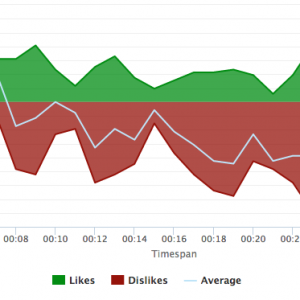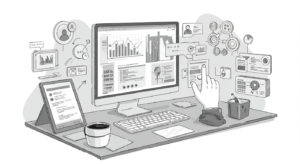Research Automation: The Future of Digital Marketing
Market research automation can be defined as “the use of systems with little human intervention, decreasing or eliminating needless human labor operations, and therefore freeing people to focus on high-intelligence operations.” Another definition of market research automation adds to the value by stating that it is “the absence of humans in the essential execution of certain steps.”
It’s helpful to think about market research automation in terms of whether it’s an entire end-to-end research project workflow or a single component of a research project or process that’s being automated. By definition, automating a whole end-to-end project is more challenging, however as market research automation has become more common in recent years, and new tools and methodologies have been developed.
In this article, we’re going to delve more into the specifics of research automation, including its types and some of its many benefits. Ready to dive in?
Types of Research Automation
I. Stand-alone elements research automation
a. Data collection
The shift away from traditional human face-to-face or telephone research to automated data gathering has been underway for some time, particularly in quantitative research. There is a wide selection of automated data collecting software available, ranging from do-it-yourself programs like SurveyMonkey to expert-designed product suites for advertising and innovation or Qualtrics for experience management.
b. Sampling
Sampling has also gotten more automated in recent years. Faster execution, fewer operating expenses, and fewer error rates result as a result of this. There are concerns that removing the human element from sampling will have a negative impact.
Automation, for example, might lead to a poor responder experience if it is not managed correctly: filling out demographic information again, constantly being out of quota for surveys of interest, or being unable to access surveys they have been invited to.
c. Data Cleaning
There are a variety of technologies that can make one of the most important, but also the most tedious and sleep-inducing, jobs easier. Much data cleaning may now be done automatically, from verifying and fixing formatting to de-duplicating and finding discrepancies based on past answers. Data cleansing doesn’t have to be a laborious task, thanks to products like MS Excel, which has a number of capabilities that can help speed up the process, and full-scale BI systems like Sisense.
d. Data Analysis
For a long time, most quantitative research analysis has been automated to some extent, utilizing software such as SPSS, for example. Newer market research automation systems are increasingly taking on the labor-intensive job that is typical of much qualitative research.
These tools can assist humans in doing qualitative research on a scale that would be impossible for humans to achieve. It also helps bring qualitative and quantitative data to better consumer comprehension and compare and analyze data across projects to provide macro-level business insights.
e. Data visualization
Thousands of researchers spend hours combing over their data in Excel to create hundreds of PowerPoint slides, which is one of the most time-consuming aspects of research. Not only is this wasteful, but the outcomes aren’t usually valued by busy stakeholders who don’t have time to go through hundreds of slides.
Dashboards that focus on business issues, such as KPIs with the direction of travel, or comparisons with other data and industry benchmarks, can relieve researchers of this labor, allowing them to focus on what the research means for the organization.
f. Respondent Engagement
It’s crucial to keep respondents happy so they’ll continue to participate in market research. Most market research automation platforms now include communications options similar to those found in social media or content platforms. This allows you to send respondent invitations, reminders, thank-you letters, and other messages depending on programmed criteria and project events.
b. End-to-end market research automation
These tests are ideal candidates for automation because they can, and should be, reasonably uniform and require repeated repetitions, as brands test multiple versions of the same product or a piece of creative. The most common projects that are automated in this way include tactical research, such as concept, copy, and claims testing.
Specialists create these types of market research automation systems for use by researchers and their internal clients, and they include safeguards to limit the chance of errors and improve the quality and consistency of the outputs.
Benefits of Research Automation
a. Cost-efficient
By eliminating the costs of human telephone interviewers, the introduction of internet research dramatically transformed the cost model for quantitative survey research. It is self-evident that anything that removes humans from a process would assume any initial investments are made, resulting in significant cost savings.
Similarly, anything that eliminates the need for researchers to do time-consuming, repetitive operations like data cleansing or creating PowerPoint decks saves money.
b. Speed
Similarly, automated systems that don’t rely on how quickly individual humans can check tables or conduct interviews have shortened market research project turnaround times from weeks to days, if not hours. This is critical in today’s digital environment.
Consumer insights are critical for brands to stay competitive, and they can’t afford to wait weeks for them.
c. Scalability
Qualitative research on a quantitative scale has become possible — thanks to advances in automating the structure of text or image data. Furthermore, the cost-effectiveness and timeliness make it possible to do more research.
The end-to-end tactical projects mentioned above, in particular, have become so quick and inexpensive to execute that marketing stakeholders are likely to want to put more of their innovative ideas to the test.
d. Accuracy
Other types of automation, such as mobile-based research, can improve accuracy when used in the right situation. Because repetitive operations like data cleansing, entering, and checking are infamously prone to human mistakes, market research automation can help to reduce human mistakes significantly.
Final Thoughts
Insights experts can spend less time on low-value, repetitive tasks and invest more time curating consumer insights and driving business transformation thanks to market research automation.
The present and future of market research is market research automation. Its popularity is only going to expand, which is terrific news for researchers, suppliers, marketers, and businesses looking to do more with less, save money and time and improve their research.








